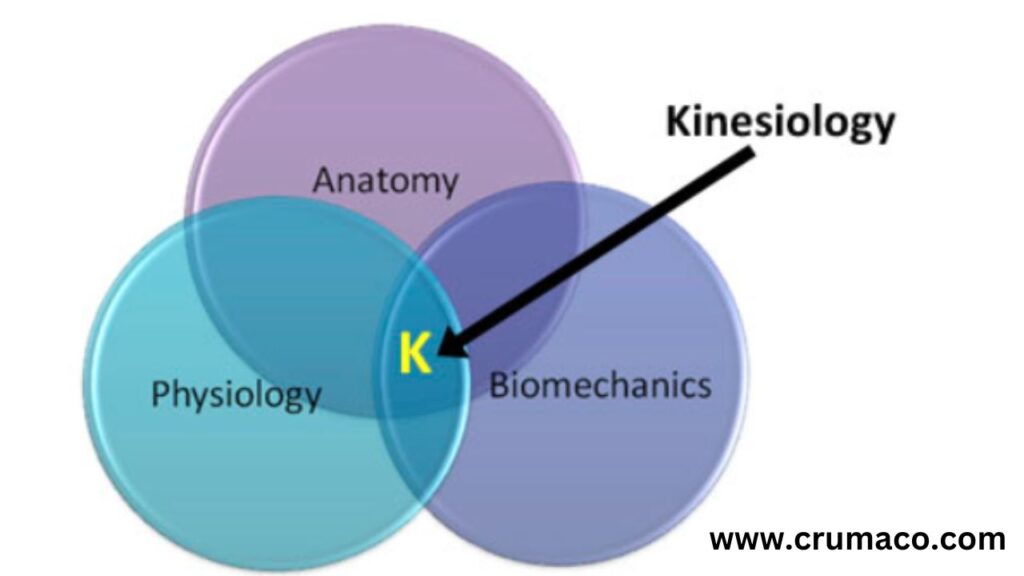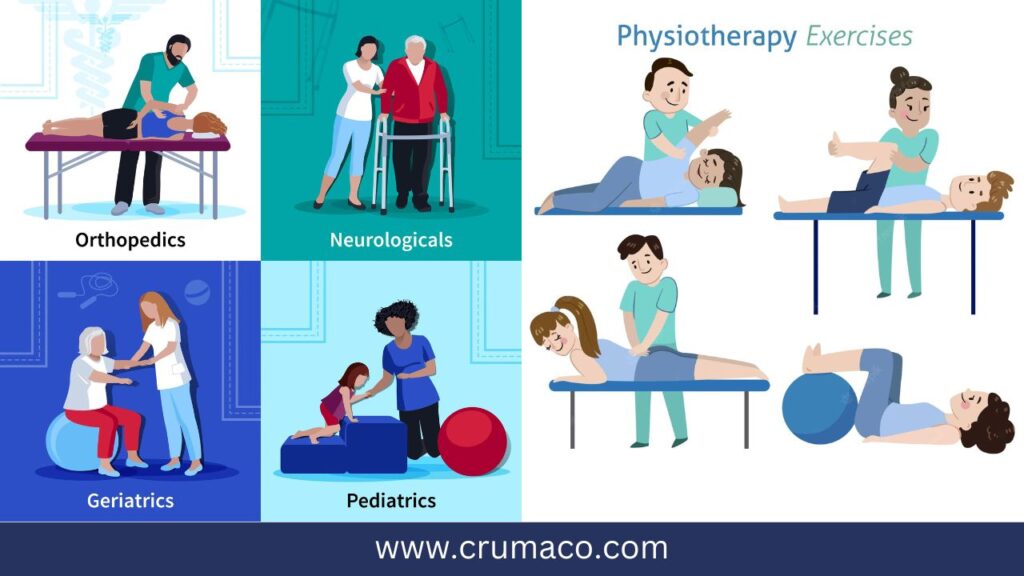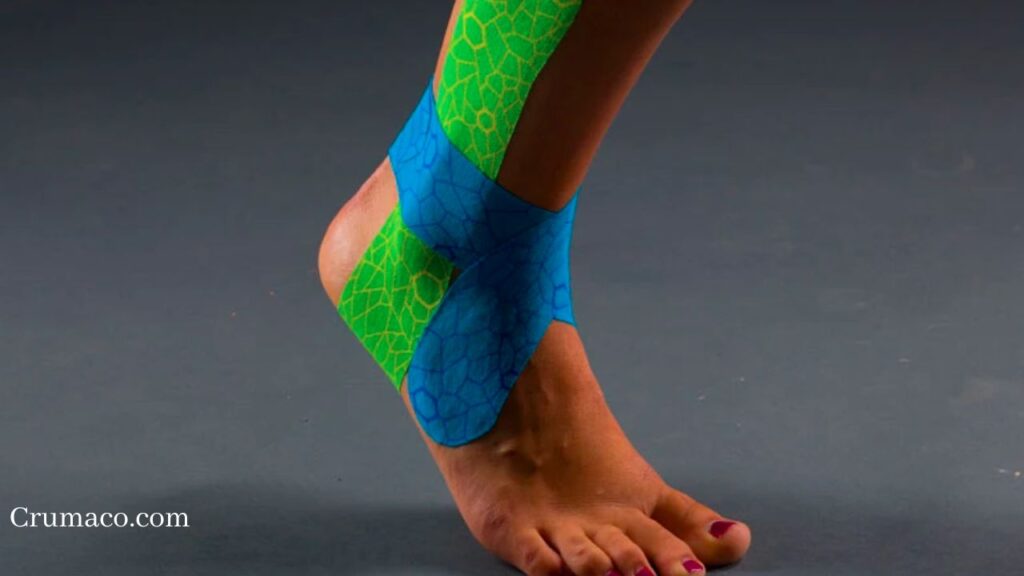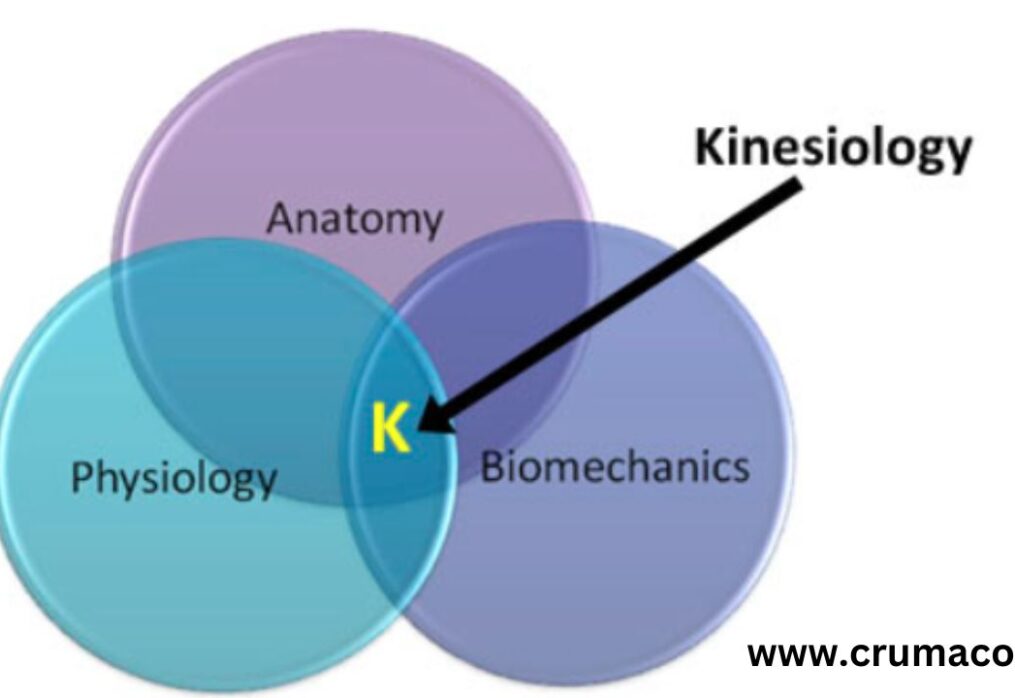Branches of Kinesiology
What are the three branches of kinesiology?

There are three Branches of Kinesiology for the study of Kinesiology: Anatomy, Physiology (Function), and Biomechanics.
1. Anatomy (Form)
You have a strong foundation in muscle anatomy from your early education. Soft-tissue therapists must be aware of the subcutaneous structures on which they will administer their techniques. To understand what can contribute to a client’s dysfunction, anyone dealing with any degree of pain or injury must be familiar with these tissues.
The clinical information required for treatment goes beyond the names of the muscles and the locations of their attachments. It shouldn’t finish with muscles at all; instead, it should move on to ligaments, tendons, nerves, and fascia, the other soft tissues that frequently need to be handled in various illnesses. Although muscle tissue is the most frequent structure used by massage therapists, it is by no means the primary source of discomfort in soft tissues. Important aspects of the client’s condition will go unnoticed if you are unaware of other soft tissues that may cause pain.
2. Physiology (Function)
Physiology is the study of function, whereas anatomy is structure. The function of the locomotor tissues, especially the neuromuscular link, is the second important kinesiology component. Muscle contraction is brought about by neurological signals sent to the muscles. Movement difficulties and discomfort may come from a disturbance or irregularity in neuromuscular activity or regulation.
Even though you might not be aware of it, massage therapies regularly use this fundamental knowledge of neuromuscular physiology. Consider how PNF stretching utilises concepts of neuromuscular control, such as post-isometric relaxation. Other techniques, such as active isolated stretching, rely on certain postures to prevent the neuromuscular stretch response from being triggered. Methods based on physiological principles are used to treat the client with postural dysfunction and painful trigger points to deactivate and neutralise these dysfunctional trigger points optimally.
3. Biomechanics
The third clinical science of kinesiology to connect with kinesiology is biomechanics. In essence, it is the study of physical forces applied to the formation and operation of biological systems. It can occasionally be mistaken for body mechanics, learned through applying massage strokes. Understanding anatomy and physiology is necessary to do biomechanical analysis.
You must know a structure’s physiological responses to mechanical stress to predict how it would behave under various mechanical pressures. Examining the forces applied to the body during an accident or exercise, including their direction, velocity, and severity, is necessary for evaluating a soft-tissue injury. The practitioner determines how to treat the tissues by doing a mechanical study to determine whether the stresses were adequate to induce certain tissue damage.

Trusted Best Kinesiology Clinic in Delhi- Crumaco
The most reliable “Best kinesiology clinic in Delhi” in your neigh bookhood of Delhi is Crumaco. For many years, we have been a group of Delhi’s top therapists. We have learned everything from our team leader Dr Tanvir Logani, and we are glad to say we are. As a team, we manage patients in the OPD and those in the intensive care unit. Our main responsibility is to extubate patients while providing the best pulmonary rehabilitation and exercise treatment; on the other hand, in OPD, we collaborate closely to identify the cause of the pain before treating both the cause and the discomfort.
One of Delhi’s prominent kinesiology clinics is Crumaco. You may use Kinesio Taping to recuperate from sports injuries with the aid of the physiotherapy specialists at Crumaco Clinic. This tape method aids in easing joint, muscle, and ligament discomfort. In addition to treating other illnesses, it is frequently used to treat sports injuries. Sports injuries can be healed by Kinesio taping therapy. Lower back, knee, tennis elbow, upper back, ankle, hand, and foot sprains are all treated with KT TAPE.
KT TAPE, which raises the skin and generates skin convolutions, rehabilitates injured muscles. More interstitial gaps can be formed by lowering interstitial pressure and increasing interstitial space, which promotes the regeneration of injured tissues. It also makes lymphatic drainage easier and significantly lessens pain.

What do Kinesiologists do?
The scientific study of human performance, movement, and function is known as kinesiology. The study of biomechanics, anatomy, and physiology are all included in the practice of kinesiology, which also takes into account neurobiology and psychosocial aspects. Evidence-based research is used by kinesiologists to treat, prevent, and improve movement and performance. Kinesiologists assist people of all ages and physical abilities in achieving their health and wellness objectives and enhancing their quality of life in various settings. The following are some areas of kinesiology practice:
- promotion of health
- rehabilitating injuries
- management of chronic illness
- safety in the workplace and ergonomics
- athletics and fitness
- preparing for returning to work and managing disabilities
- public health

Kinesiologists are healthcare professionals with a bachelor’s degree in kinesiology and years of experience who employ approaches supported by research to help you reach your fitness and health objectives. Kinesiology is a physical exercise schedule recommended for treating any illness identified by a medical specialist. To assist their customers, kinesiologists employ weight training, cardiovascular training, postural evaluations, balance training, range of motion training, and health coaching. Relating to your low back ache-
Kinesiologists can help you feel better and get back to moving by using a variety of treatments to treat your low back pain. Which are:
1. Strength training
By applying an external force to a muscle or set of muscles, kinesiologists utilise resistance training to increase physical fitness. Using dumbbells, cables, resistance bands, your body weight, or even water might be considered an external force.
Resistance training benefits are increased bone density, better muscles, tendons, and ligaments, and a decreased risk of common musculoskeletal injuries.
Your lower back, typically relatively flexible and dynamic, may withstand greater load before becoming damaged if the muscles supporting the pelvis and spine are strengthened via resistance training.

2.Cardiovascular training
Exercise that increases your heart and breathing rate is called “cardio”, for short. It is also known as aerobic exercise; picture Richard Simmons and Jane Fonda or your neighbour who wakes up early to go swimming. Cardiovascular exercise is employed for various reasons, including improving muscular endurance, shedding pounds, and lowering the risk of cardiovascular disease.
Cardiovascular training is a systematic method in sports training, including repeated motions like walking, riding, rowing, using an elliptical machine, a treadmill, a stationary cycle, swimming, and jogging. It has a detoxifying impact and strengthens your heart through healthy stress (you’ll be able to sprint for the bus more readily if necessary).
Cardio lubricates your joints, increases blood flow to every region of your body, removes waste, and promotes healing.
How does exercising reduce lower back pain? Repetitive leg motions cause little movements in the pelvis and low back, which helps loosen up tight muscles surrounding the spine and lessens low back irritability.
Cardio may be performed at any intensity and modified for any level, from elite athletes to people with limited mobility, which is its strongest feature. Your kinesiologist will determine the intensity, duration, and kind of cardiovascular exercise that best meets your requirements and goals based on objective measurements like your degree of endurance.

3.Postural Evaluations
Identifying and treating muscular imbalances that may be causing pain or dysfunction is a speciality of kinesiology (i.e. a limitation in your movement). They examine your hip rotation, spine curvature, and if your shoulders are positioned forward or back during an extensive evaluation. They compare the lengths of your left and right sides to look for any variations that might result from strong or weak muscles. Postural evaluations are highly successful thanks to these basic yet fundamental findings.
Postural evaluations are crucial because they give the kinesiologist information about your body that will help them design an organised and successful workout regimen for you.
For instance, a rounded lower back may indicate weak hip flexor muscles, adding unneeded stress to the low back while standing and sitting. A postural evaluation enables the kinesiologist to pinpoint these areas of weakness so they can design workouts that will strengthen the hip flexor muscles and, as a result, lessen discomfort.

4.Balance instruction
The ability to balance is essential for everyday activity. Your risk of re-injury is reduced by using unstable surfaces, which kinesiologists may employ to help you become more aware of your body. Unstable surfaces present your body with various challenges since they are a varied stimulation. This improves your ability to maintain balance to adapt to real life’s environmental changes, such as stumbling on rocks at the beach or walking on an icy pavement in the winter.
Can one learn to balance?
Yes! Functional motions like step-ups into risers (imagine step class), balancing on tiny, shaky surfaces like a half-exercise ball or foam pad, or transferring your weight while standing on one leg are all examples of balance exercises. Exercises for balance build the muscles that support the hip, leg, and spine bones. Additionally, they teach the body to activate the muscles that protect the spine under erratic but regulated circumstances. You’ll be able to comfortably restore equilibrium without straining your back when you encounter an unanticipated disturbance outside the studio (like a sudden drop off of a curb you didn’t see).

5.Range of motion
Our joints are where our range of motion begins. Because joints are essential to mobility, kinesiologists pay particular attention to these complex structures in addition to physiotherapists. The joint’s form, the tissue’s suppleness, the makeup of the ligaments, and the chronic tension of the muscles around it all impact a range of motion.
To help you achieve greater mobility at your target joint, kinesiologists employ static (long holds), dynamic (movement through your whole range), and trainer-assisted (Proprioceptive Neuromuscular Facilitation) stretching approaches. Increased mobility entails training to touch your toes or raise your arms overhead.
You may improve your mobility in more ways besides just stretching. Increase the length of your muscles and the surrounding tissue using instruments like foam rollers, massage balls, and dowels. The most effective techniques to utilise these instruments to target the muscles around your injury will be demonstrated by your kinesiologist.
The “figure four” stretch is a typical low back pain treatment. When performing this stretch, you should be lying on your back with one leg crossed over the other in the shape of a four looking down from above. It would help if you also held the bottom thigh with both hands.

6.Coaching for Health
Personal trainers and dietitians are not the only professionals that offer health counselling. The job of kinesiologists goes beyond teaching movement skills; optimal movement and exercise may need a lifestyle change. They also partner in holding one another accountable for making healthy decisions. They assist you with motivational interviews and basic diet planning and counselling (MI).
The kinesiologist can mix active listening (following) and providing information or guidance during a motivational interview (leading). Your views, habits, and experiences are the subject of open-ended inquiries from the kinesiologist, who then directs the dialogue to consider whether a change would be meaningful or advantageous.
You may talk to your kinesiologist about how prolonged office chair use might impact your back discomfort. Thinking back on the adjustments you’ve made (such as training to build up your muscles) and making some straightforward adjustments to your daily work schedule may help accelerate your healing and recovery.
